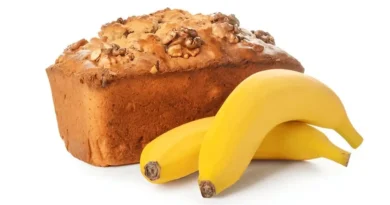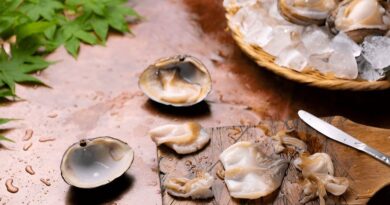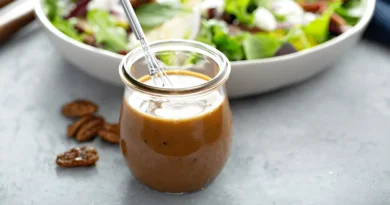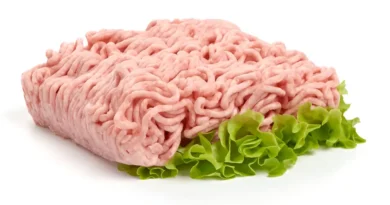Easy Healthy Baking Recipes For Every Meal
Opting for healthy baking recipes doesn’t mean you have to sacrifice your favorite comfort foods. Making homemade baked goods lets you control what goes into your treats. This way, you can cut down on added sugars and artificial additives.
With nutritious baking techniques, you can enjoy treats that are good for you. These recipes are perfect for every home cook. They use common ingredients and simple steps to make delicious muffins, cookies, and bars.
These treats are not only delicious but also low in calories. Every recipe balances flavor with health. This shows that nutritious eating can be just as fun as indulging in classic treats.
Healthy Baking Recipes: Key Takeaways
- Homemade baked goods avoid hidden sugars and preservatives.
- Healthy baking recipes work for all cooking skill levels.
- Whole grains and natural sweeteners boost nutritional value.
- These recipes adapt to dietary preferences like gluten-free or low-sugar.
- Baking at home lets you create desserts that taste great and support wellness goals.
Why Healthy Baking Matters for Your Wellbeing
Switching to healthy baking recipes goes beyond simply changing ingredients. It’s a journey to better wellbeing. Every bite can nourish your body and mind. It starts with knowing what you eat.
Nutritional Benefits of Homemade Baked Goods
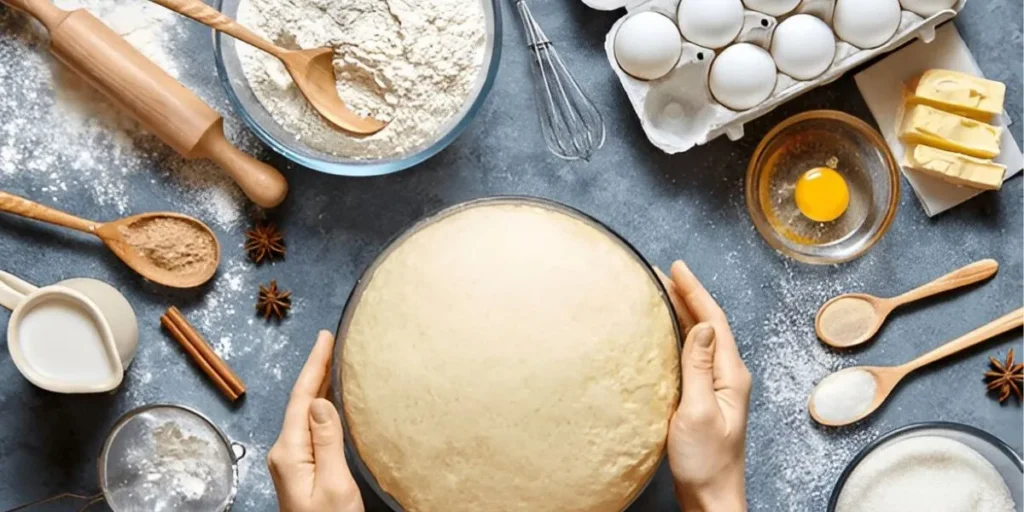
Homemade treats can be healthier. You can add fiber-rich flours like whole wheat or spelt. This is different from store-bought items, which often have too much sugar and preservatives.
| Aspect | Homemade | Store-Bought |
| Sugar Content | Customizable | Often excessive |
| Fiber | Up to 5g per serving | Negligible |
| Ingredients | Whole foods | Artificial additives |
Controlling Ingredients for Better Health
Choose ingredients that fit your health goals. Swap refined sugar for honey or maple syrup in cookies. Use almond flour in cakes for fewer carbs. Small changes make a big difference.
- Replace 1 cup white sugar with ½ cup dates + ¼ cup applesauce
- Add chia seeds for omega-3s in muffins
- Use coconut oil instead of shortening
The Psychological Benefits of Baking
Baking is creative and calming. A 2023 study published in the Journal of Nutrition found that 78% of people experienced less stress after baking. As you bake, you’re also caring for yourself.
“The act of baking is a form of therapeutic creation.” — Dr. Susan Weiner, RD, CDE
Sharing your baked goods with others strengthens relationships. It boosts emotional wellbeing beyond the kitchen.
The Essentials of Healthy Baking Recipes
Learning to bake healthy starts with the basics. Every ingredient and tool counts. Let’s explore what makes a recipe both healthy and easy to make.
- Tools for precision: Get measuring cups, spoons, and a kitchen scale for exact amounts. Use silicone mats or parchment paper to cut down on oil.
- Pantry staples: Keep whole grain flours, natural sweeteners, and spices on hand. They add flavor without extra sugar.
Reading labels is crucial. Choose recipes with simple, recognizable ingredients. Avoid artificial additives and hydrogenated fats. Use oats, nuts, or seeds as main ingredients.
Balance is key. Even healthy recipes need fats, sugars, and grains to work together. For example, mix dark chocolate chips with whole wheat flour for taste and texture.
These basics are your starting point. They help you make recipes that fit your dietary needs, like gluten-free or low-sugar. Start simple, adjust as you go, and let these basics guide your baking.
Smart Substitutions for Traditional Baking Ingredients
Making healthy baking recipes doesn’t mean you have to give up taste. With ingredient substitutions, you can turn classic treats into healthier options. Each swap improves flavor, texture, and nutrition, so you can enjoy your favorite desserts without losing your health goals.
Natural Sweetener Alternatives
Replace refined sugar with natural sweeteners for a better taste without the sugar rush. Here’s how to pick the right one:
| Sweetener | Glycemic Index | Best For |
| Honey | Moderate | Cakes, glazes |
| Maple Syrup | Lower | Pancakes, pies |
| Date Sugar | Low | Cookies, crusts |
| Coconut Sugar | Moderate | Cookies, brownies |
Use less since these are sweeter. If using liquid sweeteners, adjust the liquid in your recipe.
Healthy Fat Replacements
Swap butter or oil with these options to cut down on saturated fats:
- Applesauce: 1:1 for oil in cakes/muffins
- Plain Greek Yogurt: ⅔ cup per cup of butter in brownies
- Avocado Puree: ½ avocado for 1 tbsp butter in chocolate recipes
- Nut Butters: ½ cup for ½ cup oil in cookies
Start with small batches to check the texture. Nut butters add richness without the oil’s heaviness.
Flour Alternatives for Dietary Needs
Switch wheat flour with these options for different dietary needs:
| Flour | Texture | Best For |
| Almond | Crispy, grainy | Muffins, crusts |
| Oat Flour | Moist, dense | Biscuits, breads |
| Coconut | Light, airy | Cookies, cakes |
| Bean (e.g., chickpea) | Hearty, dense | Bars, brownies |
Coconut flour absorbs moisture—add an extra egg or liquid. Bean flours are great for gluten-free diets because they’re high in protein.
Low Sugar Dessert Ideas That Don’t Sacrifice Flavor
Creating low sugar dessert ideas doesn’t mean you have to give up on taste. By using natural sweetness instead of sugar, you can enjoy delicious treats that are also good for you. Here’s how to find that perfect balance:
Fruit-Sweetened Baking Options
- Replace refined sugar with mashed bananas, applesauce, or dates for moisture and natural sweetness.
- Try blueberry oat bars with mashed berries or zucchini bread with shredded veggies and cinnamon.
- Use frozen fruit like mango or pineapple to add tropical flavor without extra sugar.
Working With Stevia and Monk Fruit
Zero-calorie sweeteners like Stevia in the Raw or Now Foods Monk Fruit Sweetener reduce sugar content. Use 1/3 the amount of sugar you would normally. Mix them with a little honey or maple syrup to avoid bitterness. Choose brands with few additives for a cleaner taste.
Reducing Sugar Without Affecting Texture
Sugar helps with texture, so substitute with:
• Greek yogurt or applesauce for moisture
• Vanilla extract or spices (cinnamon, nutmeg) to enhance sweetness
• Erythritol for crispiness in cookies or granola
“The key is layering flavors—citrus zest or toasted nuts add depth without sugar,” says registered dietitian Emily Carter of Nutrition Currents.
These tips make low sugar dessert ideas a hit with everyone. Focus on natural sweetness and smart swaps to keep your treats moist and tasty. Your taste buds won’t miss the sugar, and your health will benefit.
Gluten-Free Baking Recipes That Actually Taste Good
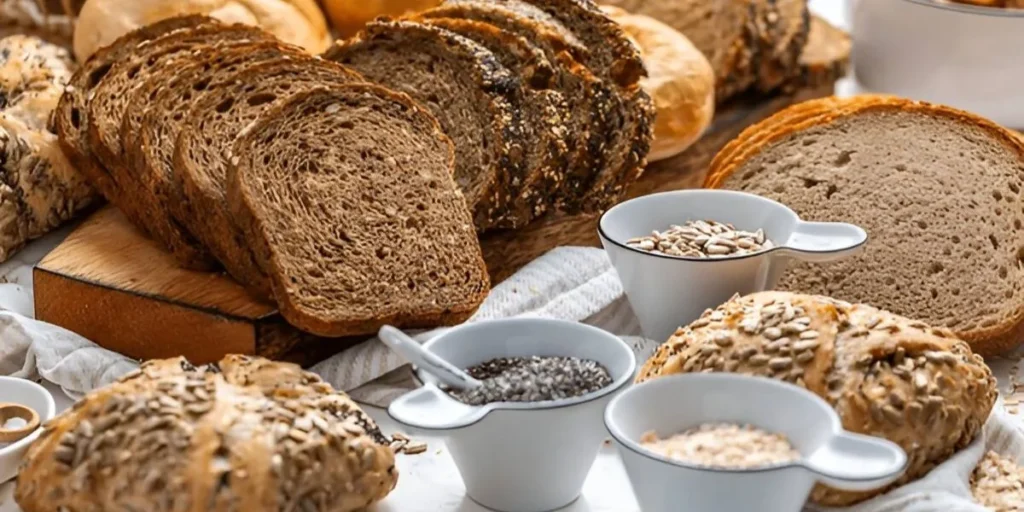
Learning to bake gluten-free starts with knowing how gluten works. It gives dough its stretch and softness. But, gluten alternatives can do the same job without losing flavor. For celiac-friendly desserts, mixing flours like rice, tapioca, and potato starch makes the right texture. Adding xanthan gum or psyllium husk helps everything stick together and keeps it moist.
- Key Ingredients: Almond flour adds richness, coconut flour keeps things moist, and arrowroot powder makes things tender.
- Recipe Examples: Try making flourless chocolate cakes, macarons, or banana bread with ripe bananas to help it stick together.
- Equipment: Sift dry ingredients twice to avoid lumps. Use digital scales for precise measurements.
Try using premade blends like Bob’s Red Mill 1-to-1 Gluten-Free Baking Flour for easy results. When baking cookies or muffins, adding an extra egg white helps them rise. But, don’t overmix the batter to avoid a dense texture.
For storing, cool baked goods completely before putting them in airtight containers. When hosting, bake celiac-friendly desserts on separate surfaces to avoid cross-contamination. If a cake cracks, try baking it at a lower temperature. For gritty textures, make sure all dry ingredients are well mixed.
Easy Whole Grain Treats for Everyday Nutrition
Make your baking better with easy whole grain treats. They add fiber and nutrients without losing flavor. Fiber-rich baking with grains like oats, quinoa, and barley makes snacks healthier for busy days.
Benefits of Whole Grain Flours
Whole grain flours do more than add texture. They’re full of vitamins, protein, and fiber. Here’s a comparison of some top options:
| Flour Type | Nutritional Highlights | Best Uses |
| Whole Wheat | High in B-vitamins and iron | Muffins, breads, pancakes |
| Spelt | Easy to digest, rich in manganese | Quick breads, cookies |
| Amaranth | Complete protein source | Pancakes, energy bars |
Quick Whole Grain Breakfast Bakes
Begin your day with these ideas:
- Overnight oats with chia seeds and almond milk
- Whole grain pancake mix with flaxseed
- 10-minute banana bread with walnuts
Whole Grain Cookies and Muffins
For soft results, mix whole grain flours with:
- Applesauce or mashed bananas for moisture
- Warm spices like cinnamon to enhance flavor
- Dark chocolate chips or dried fruit for sweetness
Try nutritious baked goods like oatmeal chocolate chip cookies or blueberry muffins. Use Bob’s Red Mill whole grain blends. You don’t need refined flour. These recipes show fiber-rich baking can be easy and rewarding.
Vegan Baking Options Even Non-Vegans Will Love
Exploring vegan baking options doesn’t mean giving up on taste. You can make everything from chewy cookies to fudgy brownies. Start by learning how to bake without eggs. These methods can be just as good, if not better, than traditional ones.
Learning to bake without eggs is all about finding the right substitutes:
- Aquafaba (chickpea brine) for light meringues or cakes
- Flaxseed “eggs” (1 tbsp ground flax + 3 tbsp water) for binding in muffins
- Applesauce or mashed banana for moisture in quick breads
| Need | Substitute | Example Use |
| Light texture | Aquafaba | Meringue cookies |
| Binding | Flax/chia | Granola bars |
| Moisture | Applesauce | Carrot cake |
For creamy textures, use plant-based desserts like oat milk (Oatly) for pancakes. Full-fat coconut milk is great for pies. Miyoko’s vegan butter melts and bakes like real butter, perfect for cookies or frosting.
“Plant-based desserts shouldn’t mimic—they should celebrate ingredients like dark chocolate and ripe fruits.” – Chloe Coscarelli, chef and cookbook author
Try recipes that focus on bold flavors. Think rich chocolate avocado mousse, date-stuffed walnut brownies, or black bean brownies. These vegan baking options show that you can get amazing texture and taste without animal products.
Paleo-Friendly Sweets to Satisfy Your Cravings
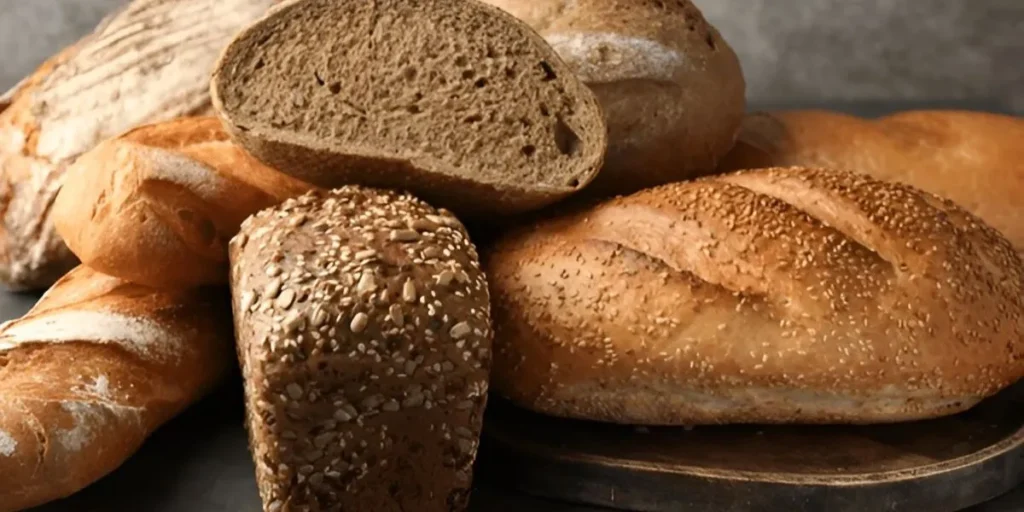
Enjoy delicious treats that fit your paleo diet. paleo-friendly sweets and grain-free baking let you have desserts that match the prehistoric diet. These recipes use natural ingredients for great taste and nutrition.
Grain-Free Flour Combinations
Start grain-free baking with the right flours. Try these blends:
- Almond flour: Adds protein and rich texture in cookies or cakes.
- Coconut flour: Use in small amounts (1:4 ratio with liquid) for moist muffins.
- Cassava flour: Versatile for pancakes or pie crusts due to its neutral taste.
- Tigernut flour: Sweet and earthy, perfect for dense brownies or energy bars.
Natural Paleo Sweeteners
Use these sweeteners instead of refined sugars:
- Raw honey: Adds depth to glazes and frostings.
- Date paste: Blends seamlessly into energy balls or truffles.
- Maple syrup: Enhances flavor in waffle batters.
- Coconut sugar: Ideal for caramel-like notes in no-bake treats.
Quick Paleo Dessert Recipes
Make tasty treats in under 20 minutes:
- Coconut Chocolate Bites: Mix melted dark chocolate (70%+ cocoa) with shredded coconut and freeze into clusters.
- Avocado Mousse: Blend ripe avocado, vanilla extract, and maple syrup for a creamy dessert.
- Fruit Crisp: Top sliced apples with a topping of almond flour, cinnamon, and coconut oil.
These prehistoric diet desserts show you don’t have to miss out on paleo eating. Try these ideas to make treats that honor your diet and satisfy your cravings.
Guilt-Free Pastries for Special Occasions
Celebrations don’t have to mean unhealthy treats. You can enjoy guilt-free pastries that impress at any event. These special occasion desserts are both healthy and delicious, showing that you can have both.
Begin by making pastry dough lighter. Use Greek yogurt instead of half the butter in recipes. Choose whole-grain flours like spelt or oat flour for more fiber. For fillings, pick fresh berries or dark chocolate (70%+ cocoa) for less sugar.
- Use phyllo dough brushed with olive oil spray instead of butter for layered pastries.
- Fill choux pastry with whipped coconut cream or silken tofu for a creamy, lower-sugar alternative.
- Top tarts with lemon zest or vanilla bean for brightness, cutting added sugar by 25–30%.
Controlling portions is key. Make mini tarts or bite-sized puffs for guests to enjoy without overeating. Decorate with edible flowers or mint leaves instead of frosting. A drizzle of dark chocolate adds festive flair without too much sugar.
These healthier pastry options are perfect for any celebration. By focusing on whole ingredients and mindful portions, you can serve desserts that are both healthy and celebratory. The secret is balance—let the ingredients’ natural flavors be the star, making every bite feel special and nourishing.
Diabetic-Friendly Baked Goods for Blood Sugar Management
Enjoying baked treats doesn’t mean you have to give up on health goals. Diabetic-friendly baked goods and low glycemic desserts can be part of a healthy diet. Making small changes in ingredients and how you prepare them can help keep blood sugar stable. This way, you don’t have to sacrifice taste.
Understanding Glycemic Impact in Baking
Choose ingredients with low glycemic index (GI) values. Oat bran, almond flour, and teff flour have GI scores under 55. This helps prevent quick spikes in blood sugar. Adding fats like avocado oil or proteins like Greek yogurt can slow down how carbs are digested.
For example, adding nuts to bars can lower the glycemic load by 20–30%. This makes the treat healthier without losing flavor.
Fiber-Rich Baking for Stable Blood Sugar
Adding more fiber can help control blood sugar. Use chia seeds, navy beans (in flour form), or inulin in your recipes. A study in Diabetes Care found that 10g of added fiber per serving can lower blood sugar after meals by 18%.
Try these fiber-rich additions:
- Psyllium husk powder (5g fiber per teaspoon)
- Flaxseed meal (8g fiber per 3 tbsp)
- Apple sauce with ground flaxseed for moisture and fiber
Sugar Alcohol Options and Considerations
Choose sugar alcohols based on their sweetness, GI, and how well they are digested. Here’s a guide to help you make the right choice:
| Ingredient | Sweetness (vs. sugar) | Glycemic Index | Key Notes |
| Erythritol | 70% | 0–2 | Safe for diabetics in moderate portions (≤20g/day). |
| Xylitol | 100% | 13 | Use cautiously—excess may cause bloating. |
| Maltitol | 90% | 35 | Higher GI; limit to 10g net carbs per serving. |
Always check nutrition labels and keep track of total carb intake. Pairing treats with protein or fats can help manage blood sugar management even better.
Conclusion: Embracing the Joy of Healthy Baking at Home
Healthy baking recipes make treats good for you without losing flavor. Every time you bake, you control what goes into your food. This lets you meet your health goals. It’s not about cutting out things, but finding new ways to enjoy food.
Starting small is key. Try using dates or coconut sugar in cookies instead of white sugar. Use almond flour for cakes instead of wheat flour. These changes help you eat better over time.
Sharing your baked goods with others makes meals special. Invite friends over to try your banana bread made with applesauce. Their positive feedback can inspire them to try healthier foods too.
Baking healthily is a journey, not a quick fix. Try new things like chia seeds or dark chocolate. Use brands like Bob’s Red Mill for gluten-free mixes or Simply Organic for spices. Each new thing you try teaches you more about what you like.


